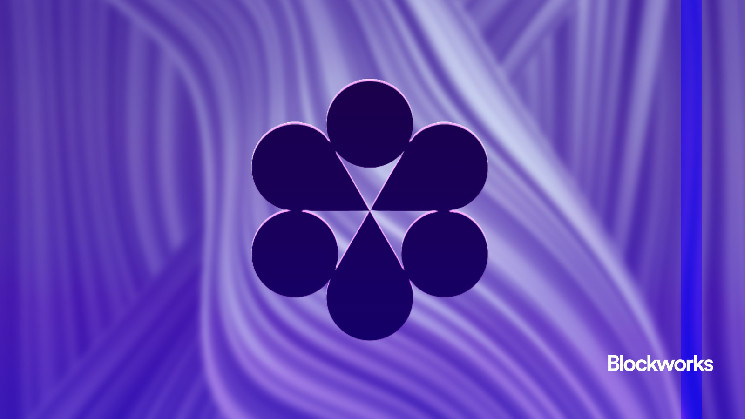Think about a freeway: The extra lanes you’ve, the extra automobiles can journey concurrently with out making a visitors jam.
For a blockchain community, a high-throughput sequencer acts to widen that freeway — permitting way more knowledge and complicated operations to move via easily. That is particularly essential for functions equivalent to onchain video games, demanding DeFi protocols and social apps, the place giant volumes of transactions and interactions must be processed at once.
Sequencer throughput determines how a lot computational work a blockchain can course of in a given time, immediately impacting the scalability and effectivity of dapps. Greater throughput permits the community to handle spikes in consumer exercise and help extra complicated, resource-heavy functions.
In the present day, Conduit introduced a 10x enchancment in throughput with the launch of G2, which it claims is the world’s strongest sequencer. G2 is predicated on a purported computational load of 50-100 million fuel per second (Mgas/s).
Learn extra from our opinion part: L2 centralization is a ticking time bomb for blockchain
The G2 sequencer is constructed upon a string of technological developments, together with deep database optimizations and enhancements in algorithmic effectivity, in keeping with Andrew Huang, Conduit’s founder.
“There’s no single breakthrough,” Huang informed Blockworks, “however somewhat a sequence of incremental optimizations — a 5% acquire right here, a ten% acquire there, and over time, it compounds.” These enhancements span each layer of the stack, from knowledge entry and storage to the cloud-native infrastructure orchestrating the system.
Underneath heavy workloads, sequencers can wrestle to maintain up with the top of the chain. G2 capability opens the door for functions that had been beforehand unattainable to run absolutely onchain, equivalent to Web3 video games. Pirate Nation, launched by Proof of Play in December 2022, debuted on the Polygon PoS chain earlier than later migrating to the Arbitrum Orbit tech stack for its Apex and Boss chains.
Learn extra: A wave of recent video games might show NFTs aren’t lifeless in spite of everything
“Because the platform grew, it required a extra scalable and cost-effective answer, resulting in the event of [the] Orbit chains,” a spokesperson informed Blockworks.
The sport is among the many first initiatives to undertake G2. Apex and Boss are each among the many high three chains by Mgas/s in keeping with rollup.wtf , a Conduit-built dashboard. The Proof of Play crew insists this exercise represents natural utilization.
“Pirate Nation makes banning bots a high precedence,” the spokesperson mentioned, including that “the Proof of Play crew has tuned the motivation construction and processes to make sure the sport is being performed by actual folks with one actual account.”
With G2, the crew was in a position to clear up its scaling problem and broaden capability with extra chains as wanted.
“Gaming type of pushes the bounds,” mentioned Huang. “They’re clearly essentially the most demanding functions.” However he additionally flagged Gravity, a Web2 app initially often called Galxe, that has efficiently migrated its complete database of 26 million lively customers onchain utilizing G2. That wouldn’t have been possible with out the upgraded throughput, he mentioned.
Learn extra: Crypto’s infrastructure bloat — are we constructing an excessive amount of?
Mgas/s as higher scaling metric
Measuring blockchain sequencer throughput by Mgas/s is supplanting the normal transactions per second (TPS) metric in terms of judging relative scalability. “TPS is a lifeless metric,” Huang mentioned. “It tells you nothing about how a lot compute is definitely taking place onchain.”
TPS will be deceptive, as eye-popping headline numbers could outcome from artificially maxing out bandwidth with easy token transfers somewhat than real-world utilization.
Mgas/s, in distinction, offers a a lot clearer image of rollup efficiency, particularly when contemplating extra complicated functions. It includes a number of various kinds of workload — from compute to storage — right into a single determine.
“It’s not good since you’re placing a multidimensional factor right into a single metric, but it surely’s significantly better,” Huang mentioned.
Whereas present public benchmarks stay restricted, that is only the start, in keeping with Huang. The G2 crew is already working towards gigagas ranges of throughput, or 1000 Mgas/s. That’s additionally the objective for Base, the Ethereum layer-2 rollup constructed on Optimism’s OP Stack. Jesse Pollack outlined a plan to incrementally elevate Base’s throughput over the approaching yr to its gigagas goal on a latest 0xResearch podcast.
For comparability, Ethereum’s mainnet processes about 1-1.5 Mgas/s.
The transfer in direction of Ggas throughput is predicted to open up prospects for nonetheless extra computationally intensive dapps, equivalent to social networks, prediction markets and high-frequency buying and selling techniques which require substantial efficiency headroom.



